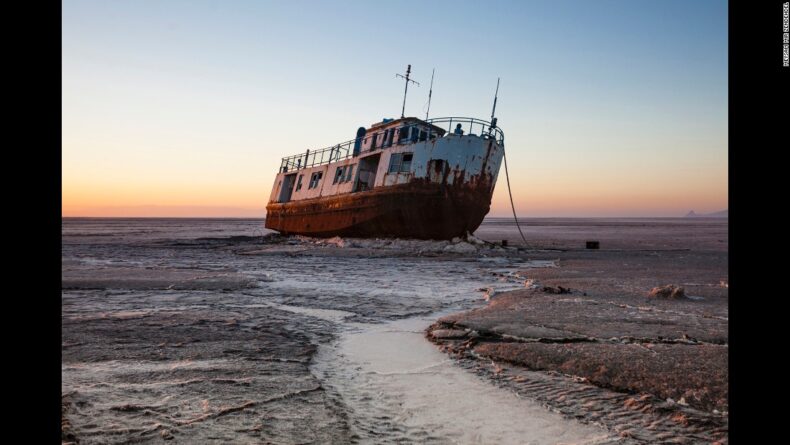Multiple numbers of protestors who were bringing awareness to one of Iran’s greatest lakes drying up have been detained by police. Urmia used to be the largest lake in the Middle East, which is located in the highlands of north-western Iran, started to decline in 1995 as a result of a combination of a continuous drought, the withdrawal of water for farming, and the construction of dams.

Lake Urmia began shrinking in 1995, used to be one of the largest salt lake in the world
On Sunday, Rahim Jahanbakhsh, the police chief of Iran’s West Azerbaijan province, reported the arrests. He described the suspects as “many evil and hostile elements, who had no other objective than to destroy public property and disturb the security of the population,” according to state news agency IRNA.
More than six million people depend on agriculture in the area around one of the world’s largest salty lakes, Urmia, which is situated between the cities of Tabriz and Urmia. 50 to 70 dams have been built On the rivers that feed the lake, which was once a well-liked tourist destination but has now shrunk.
Iran is largely dry, and like other nations nearby, it gets long-lasting dry spells and heat waves, which are anticipated to get worse with the effects of climate change. Thousands of people have protested about rivers drying up in recent months, especially in central and southwest Iran. An endemic shrimp and other aquatic species call Lake Urmia home, and it serves as a crucial destination for migrating birds. Iranian visitors used to come to Lake Urmia, which is close to the Turkish border, to take in its natural beauty and the purported healing powers of its mineral-rich mud.
The lake’s size decreased to 10% of what it had been, in 20 years, and the water that remained began to bloom with red algae. Boats and structures were left to slowly deteriorate into the newly-emerging salt plains when visitors and inhabitants stopped visiting and moved away.
Iranian authorities have been working to get Lake Urmia back to how it was in recent years, mainly by convincing local farmers to plant less water needy crops. Although the water level has increased from its record low, it is unclear if this is because of heavier rainfall or government actions.













